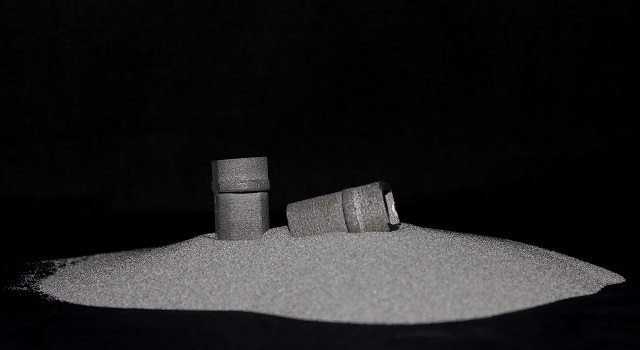For the first time, low-cost titanium powders, developed by Metalysis, have been used to 3D print automotive parts.

To date, the 3D printing ‘revolution’ has focused on the use of plastics - cheap printers’ feedstock and high throughput. So far, 3D printing with metal has been prohibitively expensive because titanium powders currently sell for $200 - $400 per kilogram, until now. Metalysis has developed a new way of producing low-cost titanium powder, which heralds a new era in additive layer manufacture and will see greater use of titanium in components across the automotive, aerospace and defence industries.
In a further development, the titanium powder used to manufacture the automotive parts is also a world-first, as Metalysis has created titanium from rutile sand, a naturally occurring titanium ore present in beach sands, in one single step. The use of this inexpensive and plentiful feedstock for titanium manufacture will dramatically reduce the cost of titanium production, allowing its increased use.
The Metalysis process is radically cheaper and environmentally benign compared with existing titanium production methods, such as the energy-intensive and toxic Kroll process. Currently, the manufacture of titanium powder involves taking the metal sponge produced by the Kroll process, which is then processed into ingot billets, melted into bar form and finally atomised into powder – a costly and labour-intensive four-step process. Metalysis takes rutile and transforms it directly into powdered titanium using electrolysis, which is cost-effective and thus essential to the supply chain; the low-cost titanium powder can be used in a variety of new applications whereas previously the metal has been excessively expensive for use in mass production of lower value items.
The Mercury Centre, which sits within the Department of Materials at Sheffield University, used Renishaw’s 3D printer to make the parts, demonstrating the feasibility of producing titanium components using additive layer manufacturing. 3D printing brings further cost benefits by reducing waste because the current means of production is subtractive, as components are shaped out of metal billets, which wastes a huge amount of material. Metalysis’ low-cost titanium powder enables additive manufacturing with its metal powder, thereby reducing the quantity of material required.
In addition to titanium, Metalysis is developing tantalum powder and will use its technology to produce a wide range of specialist metals (including rare earths). Furthermore, innovative alloys can be produced using Metalysis’ technology because the process is conducted in the solid state, hence metals with significantly different densities or melting points can be alloyed. Metal powders created by the Metalysis process can be engineered to get particle size and distribution correct for a range of PM applications.
Vice-Chancellor Professor Sir Keith Burnett FRS from The University of Sheffield said: “We are delighted that this innovative work is being undertaken in the University of Sheffield’s world-leading Faculty of Engineering. Most people associate 3D printing with plastic parts, but, with Metalysis’ titanium powder, we have for the first time demonstrated its potential in the manufacturing of metal parts. This is potentially a significant breakthrough for the many sectors which can benefit from its low-cost production. We look forward to continue working with Metalysis as they develop this ground-breaking technology”.
Dion Vaughan, CEO of Metalysis added: “Metalysis’ rutile-derived titanium powder is produced at lower cost and is suitable for 3D printing so that manufacturing metal components becomes more economical. The Metalysis process could reduce the price of titanium by as much as 75%, making titanium almost as cheap as specialty steels. We believe that titanium made by the Metalysis process could replace the current use of aluminium and steel in many products. This world-first for a titanium 3D printed component brings us a step closer to making this a reality.”